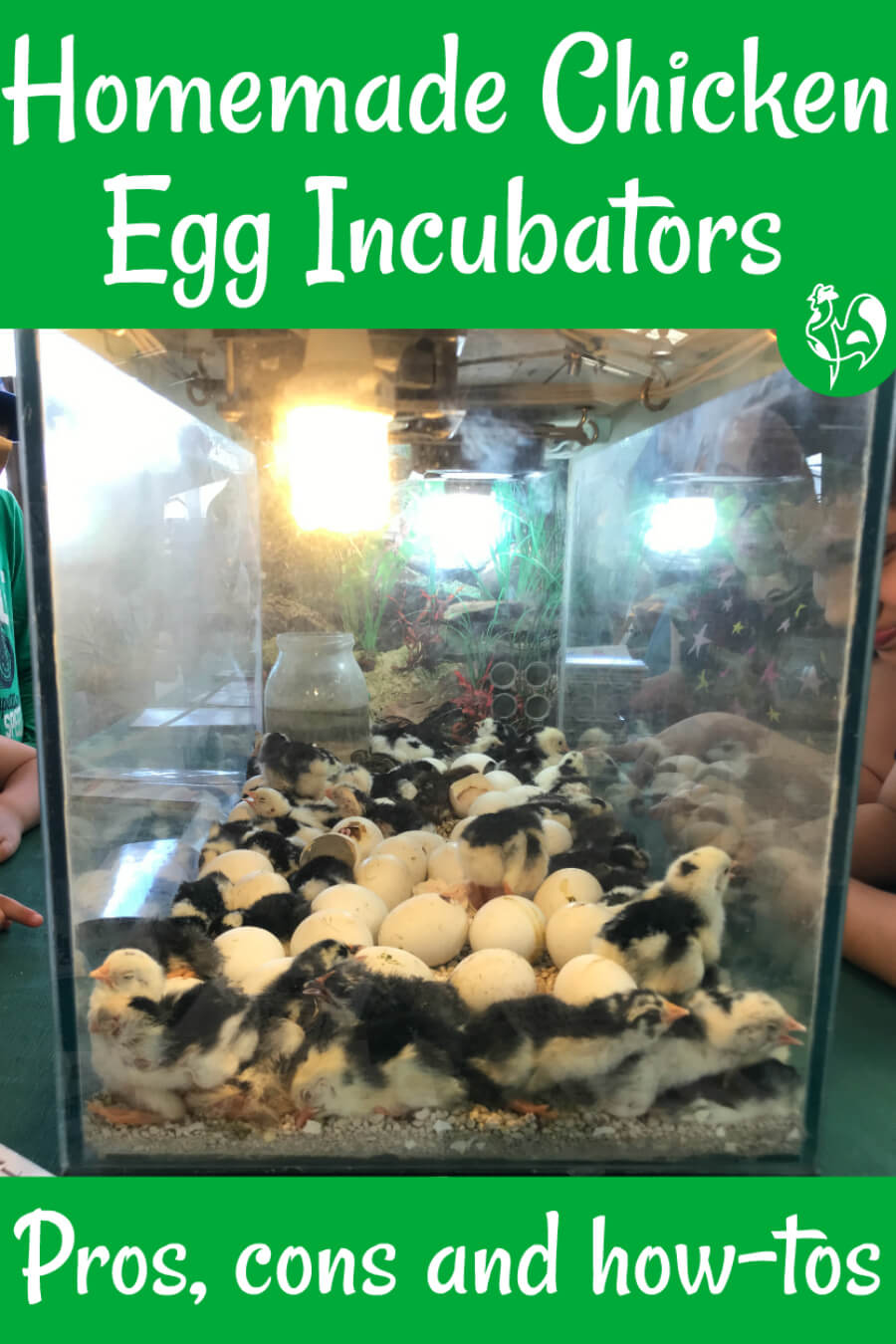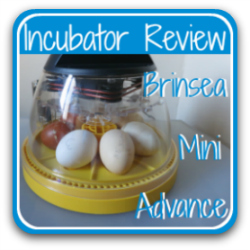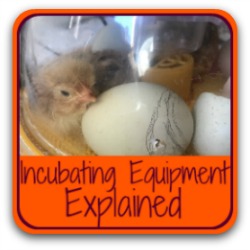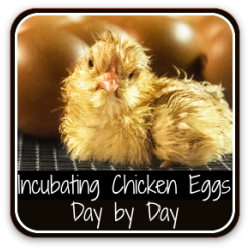- Home
- Incubators
- Homemade incubators
A homemade incubator for your chicken eggs: is it possible to DIY it?
Commercially produced egg incubators can be an expensive luxury.
Full disclosure.
I have never made an incubator myself. But many of my friends here in Italy have - in fact, my Brinsea incubators became something of a celebrity because they are such an unusual sight.
The information in this article is taken from reading extensively about DIY incubators, talking to members of our local farmers' union about their "fish tank incubator" (see below), and hearing from friends and neighbours who have used them - and still do.
So can a homemade incubator be less expensive while still providing the optimum levels of heat, humidity and security needed for a successful hatch?
Our friend Claudio tells me his mother (in rural Italy) used to hatch chicks in the warm space under the kitchen fireplace if there was no broody hen available.
Is it really that simple? Have we become too reliant on commercially-produced gadgets to perform what is essentially a very natural process?
In this article, I examine the positives and drawbacks of doing it yourself, and provide three sets of instructions to help you make your own if you decide that's the way you want to go.
And I talk to our local Farmers' Union about the fish tank incubator they have used successfully for generations.
Pros and cons of a homemade incubator.
Pros.
- It's a much less expensive way of hatching than using a store-bought incubator - at least on the surface.
- You can make it largely from re-cycled items you may have around your home, so it costs even less.
- You have the satisfaction of knowing you're using re-cycled (upcycled) items.
Cons.
- The biggest disadvantage is that it's notoriously difficult to keep temperature and humidity levels right. These are two of the most critical parts of incubation. If they're not controlled properly, hatch levels tend to be very poor.
- They tend not to work as well in rooms which have a low or fluctuating temperature - although this is also true of some of the smaller commercial incubators.
- Hatch rates in general from homemade incubators tend to be well under 50%. Some studies put it as low as 33%, although others claim to have a much higher success rate.
- It's important to remember that in any clutch of eggs there will be some which don't hatch for all kinds of reasons which are nothing whatever to do with the incubator: low fertility levels, time of year, handling and transporting problems, poor storage, bacteria infecting porous eggs and so on.
Still want to have a go at a DIY incubator? Let's look at how it can be done.
The home made fish tank incubator.
This incubator is on display every year at our local agricultural show in rural Italy. I asked the Farmers' Union representative about its success - which looks excellent - and he told me it used to be a common way to hatch in Italy when a broody hen couldn't be found or a larger hatch was needed.
- Humidity is maintained by use of one large mason-type jar (to the left of the image) and smaller cups (on the right) added as necessary.
- Heat is maintained by two lights above the fish tank and, importantly, a heated mat underneath the bedding.
- There are no fancy timers, turners or digital displays. The eggs are simply placed in the tank and left until they hatch.
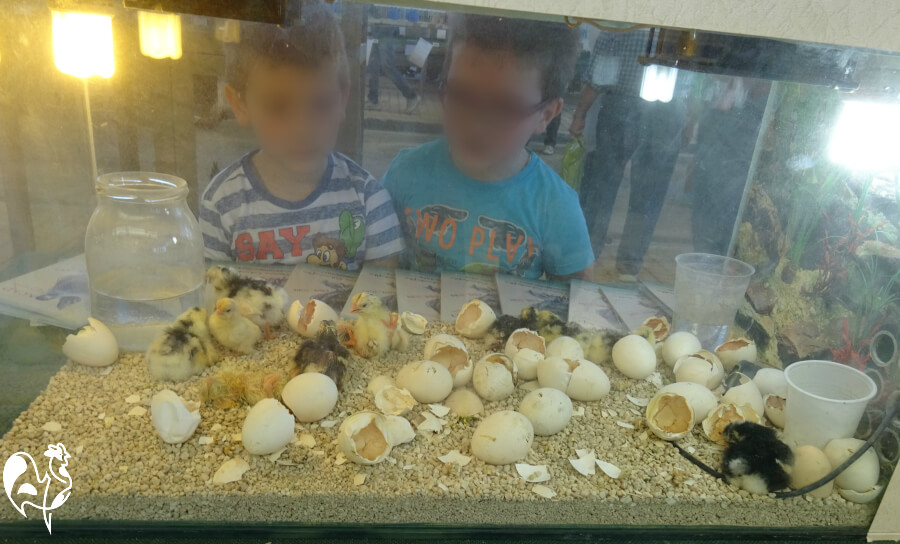 The home made fish tank incubator, on display at our local agricultural show.
The home made fish tank incubator, on display at our local agricultural show.Is the fish tank incubator successful?
Against all the odds, it seems to be. Certainly chicks hatch from it every year that I've seen it for the past twelve years.
Would I personally use this method? On a purely feeling level I'm certainly tempted, having seen it in action. It feels natural, and I enjoy using old Italian faming methods proven over generations.
But my knowledge tells me no. Glass is a poor retainer of heat, and humidity is hit and miss.
All the same, I might be tempted to give it a go, next time I hatch.
Shopping list for a homemade incubator.
A search on the internet brings up a huge number of homemade egg incubators which will hatch any kind of poultry egg. Here's what they all have in common and what you need to buy if you decide to do it yourself.
The container itself: it needs to be well insulated in order to keep heat and humidity levels constant. Popular choices are picnic cool boxes, styrofoam containers and disused refrigerators.
A way of heating it. The most popular choice is a standard 25 watt bulb attached to a lamp fitting, slotted into a corner of the container. I have also seen an electric heating pad used - see the fishtank incubator above.
Some pebbles or stones. Heat can be sustained at a more constant temperature by placing some stones in the bottom of the container.
Strong wire mesh. The heating element must be separated from the eggs and, later, the chicks. Otherwise there's a real danger they will be burned. And, depending on the material, the incubator itself may be at risk.
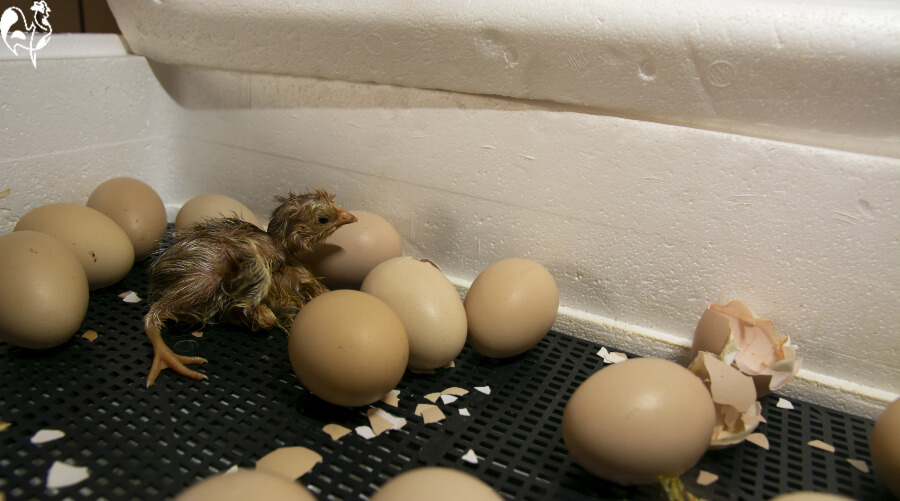 A DIY incubator made with a styrofoam container and strong mesh flooring.
A DIY incubator made with a styrofoam container and strong mesh flooring.A bowl and sponge to hold water and keep humidity at the right level. The bowl must be kept away from the hatching chicks, otherwise it's easy for them to drown. Placing it on the floor with mesh on top is a good solution.
A thermometer and hygrometer to read temperature and humidity levels respectively. This needs to be placed near the eggs for a true reading, as still air homemade incubator models tend to have hot and cold spots.
Some models also include a fan - generally a computer fan - to circulate the warm air more effectively. Sometimes they add a small motor to create a turning mechanism. Otherwise the eggs will have to be turned manually.
DIY: making your own incubator.
I've trawled through hours and hours of videos and come up with the four sets of instructions which I think are a combination of easy to follow and efficient in combining the different elements required.
My advice would be to watch all four - they only take a few minutes each - and decide on which combination of features would be best for your personal situation.
Creating a homemade incubator: model #1.
This is the most basic of the homemade incubators I've featured here. It had a very poor hatch rate: only one of the eggs hatched.
However, it has some excellent features such as the pebbles to sustain temperature. So it's worth considering combining those with more advanced features in the other two.
|
Positives. Quick, easy and inexpensive. The pebbles in the water help maintain temperature levels. The dimmer switch helps to control temperature more easily. |
Problems. Temperature is quickly affected by fluctuations in room temperature. Need to be on hand to monitor temperature and humidity levels. Styrofoam is very hard to clean, which is critical if it's to be re-used. |
Homemade incubator #2.
Of all the instructions available, this is probably the one with greatest chance of success. It's simple to make, inexpensive and this video has very clear step by step instructions.
Again, however, it had a poor hatch rate of 25%.
|
Positives. Simple to make. Inexpensive. A dimmer switch would make temperature easier to control. The sponge in the bowl will prevent newly hatched chicks from drowning. |
Problems. Lack of a fan will create hot and cool spots in the incubator. Have to be around to turn the eggs and check on temperature and humidity levels. The observation window would be better with two glass pieces to provide double insulation. |
Creating a homemade incubator: #3.
This video demonstrates a simple automatic egg turner to go with the incubator, and a fan to circulate the warm air more efficiently. Unfortunately the incubator is already made so the steps aren't quite as clear.
However, this is a detailed video for making the automatic egg turner seen in the video above. It's longer than the others (nearly 20 minutes) but if you want to go this route, it's extremely helpful.
|
Positives. An automatic turner is a definite bonus. Otherwise you need to turn the eggs by hand every few hours. |
Problems. Obviously, it's more complicated to set up than the basic incubator from the first video. |
Whichever method you choose to create your DIY homemade incubator, I hope it brings you success!
If you're interested in hatching, you may find these pages helpful.
- Home
- Incubators
- Homemade incubators
